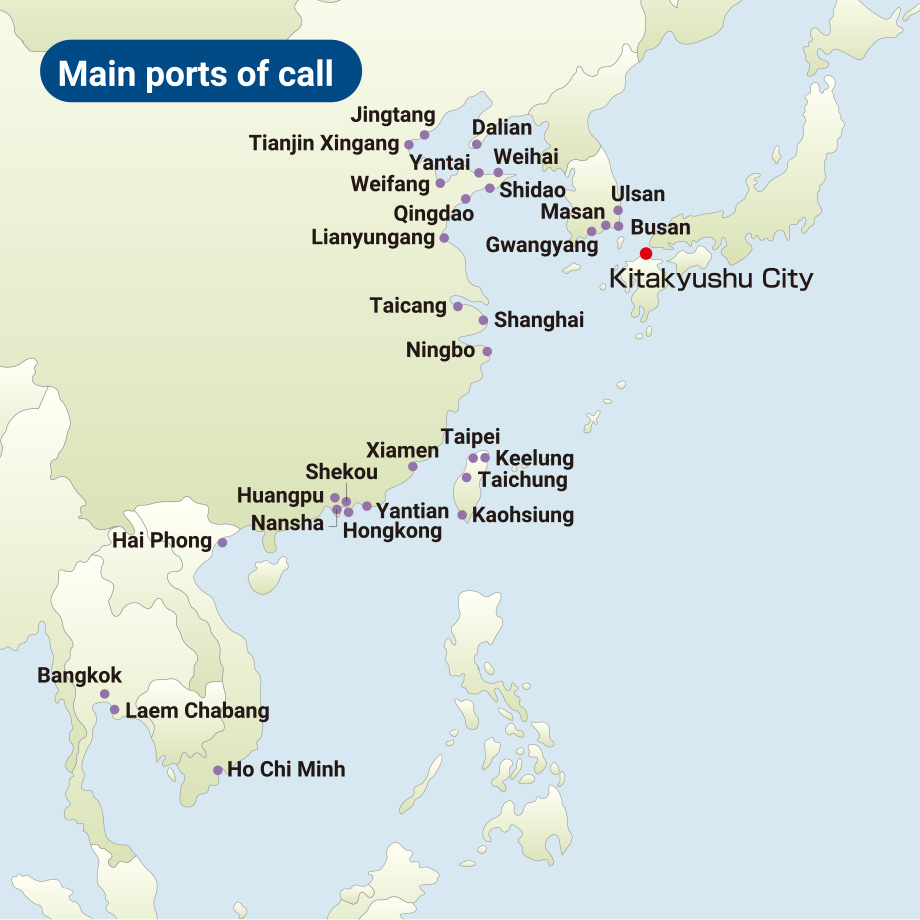Investment environment in Kitakyushu
Logistics infrastructure
Container · Ferry
Extensive Regular International Container Network
Kitakyushu Port is closely tied to predominantly China, South Korea, and Taiwan as well as other Asian ports. In addition to this, with feeder connection networks to other areas, is connected to the whole world.
As of November 1, 2018
| Country Name/Region | No. of Routes | Services/Month |
|---|---|---|
| South East Asia | 5 | 20 |
| Taiwan | 5 | 20 |
| China | 14 | 60 |
| Korea | 13 | 76 |
| Hong Kong | 1 | 4 |
| Total | 38 | 180 |
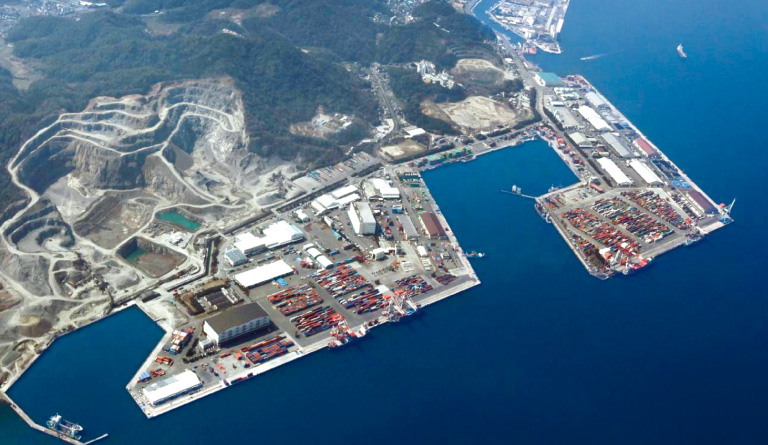
Moji (Tachinoura) Container Terminal
The historical and prominent container terminal in Western Japan.
Facility Overview
| Section | Tachinoura No. 1 Container Terminal | Tachinoura No. 2 Container Terminal |
|---|---|---|
| Service Start | 1979 | 1987 |
| Length of Quay | 620m | 555m |
| Water Depth | -12m | -10m |
| Total Area of Terminal | 16ha | 16ha |
| Container Crane | 4 | 3 |
| Straddle Carrier | 17 | 13 |
| Container Depot Capacity | 6,424TEU | 4,152TEU |
| Reefer Outlets (Volt * numbers) | 400Vx95 | 400Vx96, 200Vx36 |
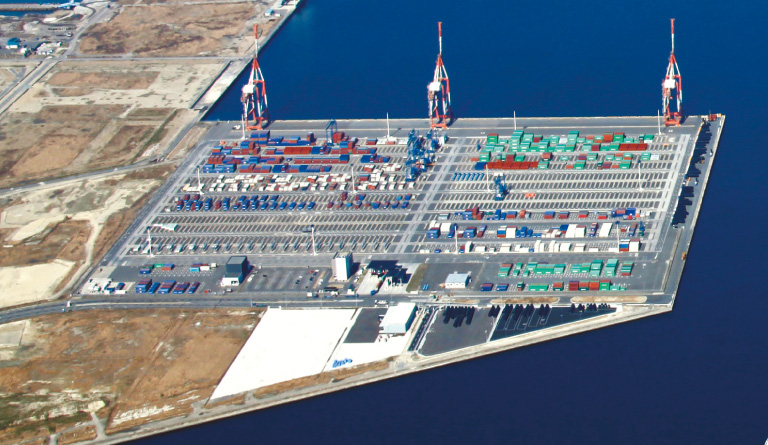
Hibiki Container Terminal
A container terminal with a deep water quay (-15m) suitable for large vessels.
Facility Overview
| Section | Hibiki Container Terminal | |
|---|---|---|
| Service Start | 2005 | |
| Length of Quay | 350m x 2 | 170m x 2 |
| Water Depth | -15m | -10m |
| Total Terminal Area | 39ha | |
| Container Crane | 3 | |
| Transfer Crane | 7 | |
| Container storage capacity | 22,464 TEUs in 4 vertical stacks | |
| Reefer Outlets (Volt * numbers) | 400Vx234 | |
Ferry/RORO shipping network
It is an environmentally friendly transportation network that can use modal shift allowing frequent transportation with large consumption areas such as Osaka, Kobe, Tokyo, Tokushima and Nagoya.
The cargo transported by the coastal ferries and RORO vessels account for about half of the total cargo volume of Kitakyushu Ports.
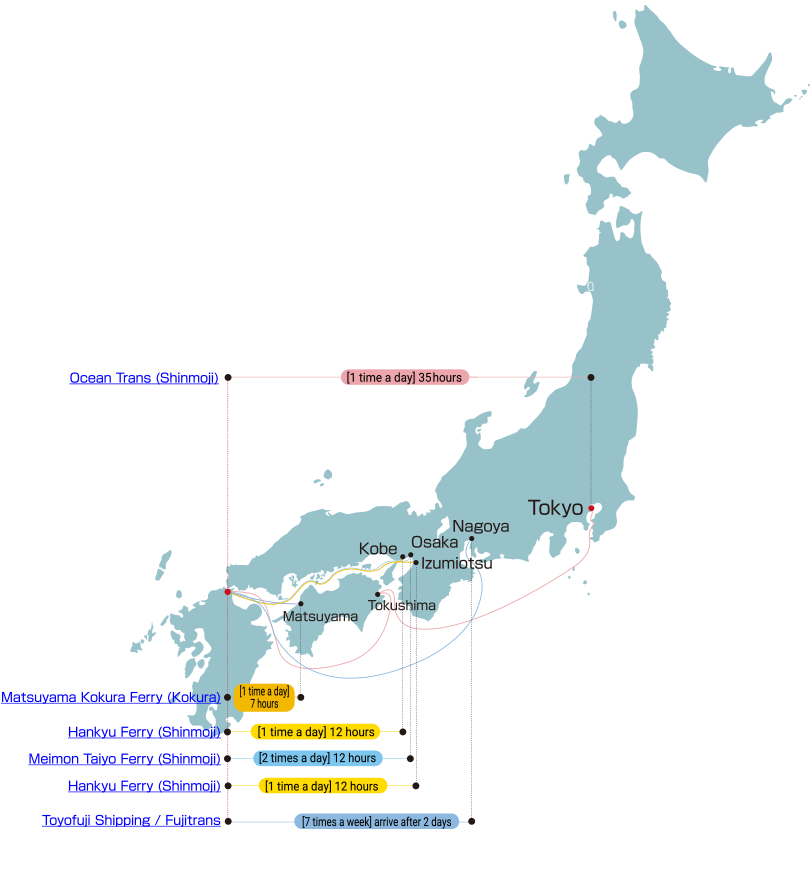
Ferry network with Tokyo, Osaka, Kobe, and others
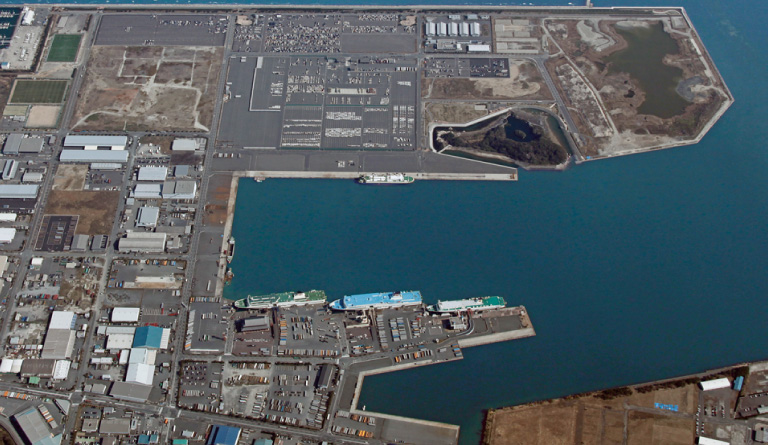
Shinmoji Ferry Terminal
There are four daily services to Osaka/Kobe (Osaka South Port, Izumi-Otsu, and Kobe) and one daily service to Tokyo and Tokushima from Shinmoji, the largest ferry terminal in western Japan. (Ferries are operated by Hankyu Ferry, Meimon Taiyo Ferry, and Ocean Trans)
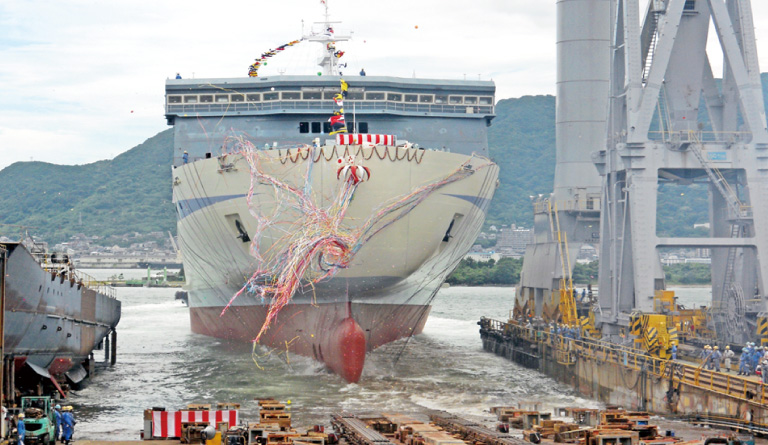
Larger Ferries
Kitakyushu Port is proud of its coastal ferry cargo handling volume which is the second largest in Japan. In addition, during 2015 and 2016, 8 out of their current 12 ferries were replaced with larger vessels, enhancing their carrying capacity.
Currently, the importance of sea transportation is increasing as the issue of truck driver shortage is becoming more serious.
Kokura Region (Asano)
There is a daily service from the Kokura area to Matsuyama (Ehime Prefecture). (Operated by Matsuyama Kokura Ferry)
The RORO network – realizing transportation to the entire nation
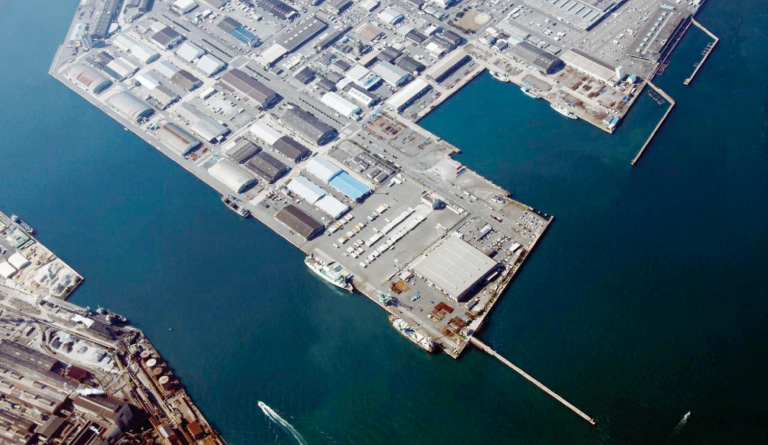
Kokura RORO Terminal
Kokura RORO Terminal has an international regular RORO services to Busan New Port 6 times a week. (Camellia Line)
Freight rail transport network
Kitakyushu Freight Terminal Station
Kitakyushu Freight Terminal Station (JR) is the freight hub station of Kyushu, the principal point of connection between the Fukuoka, Kumamoto, Kagoshima regions and the Oita and Miyazaki regions.
The 24-hour system of the domestic transport network
The Kitakyushu Freight Terminal, a railway transportation base in Kitakyushu City, is designed to be time-efficient by adopting the Effective and Speedy Container Handling (E&S) method, where loading and unloading take place directly on platforms on main tracks. It is also one of the stations that can cater for long trains of 26 cars, and cargo of 40 ft. containers and up to 35 tons. With extensive services to other cargo stations all over Japan, it has realized a wide cargo distribution network.
Environmentally friendly rail freight transport
At Kitakyushu Freight Terminal Station, which has a dedicated platform for large maritime containers, Sea & Rail transport is taking place which takes advantage of the characteristics of Kitakyushu Port, which is a short distance from Asia by sea. Transportation by rail compared to the truck is said to emit one-sixth of CO2 emissions thus reducing the environmental burden.
